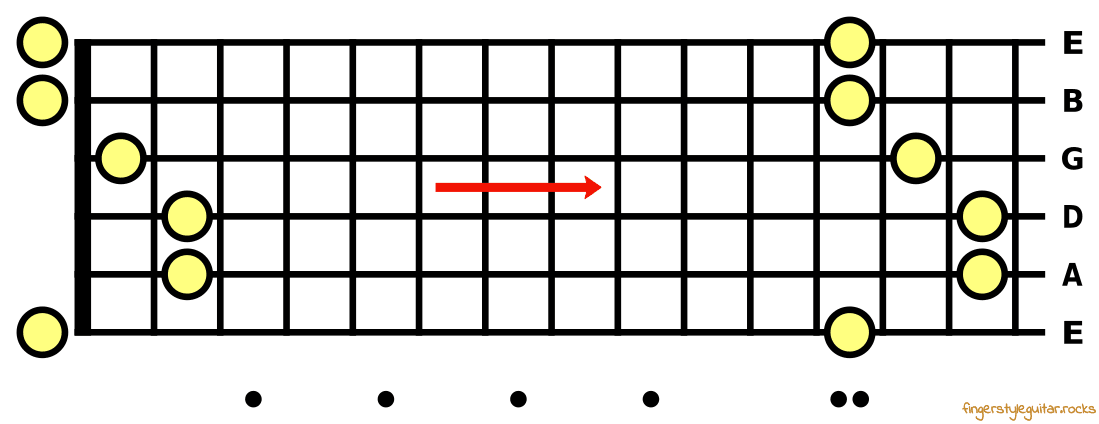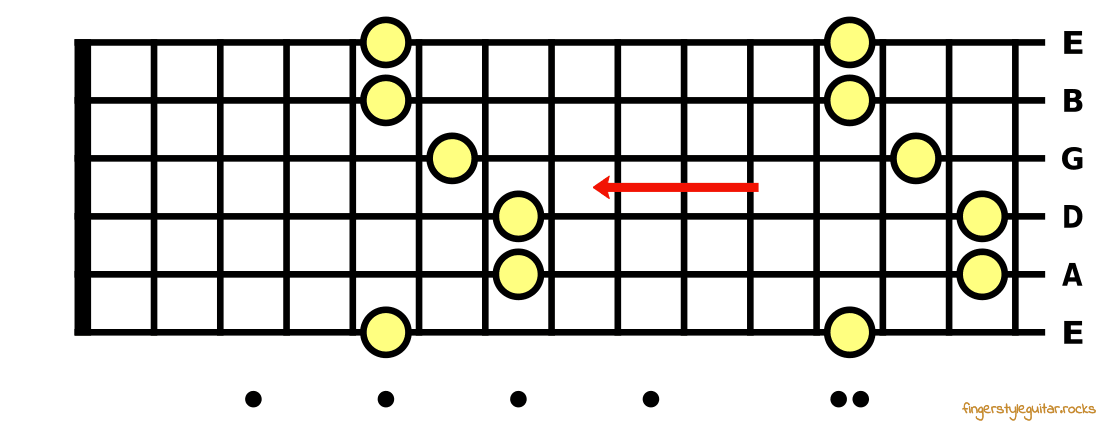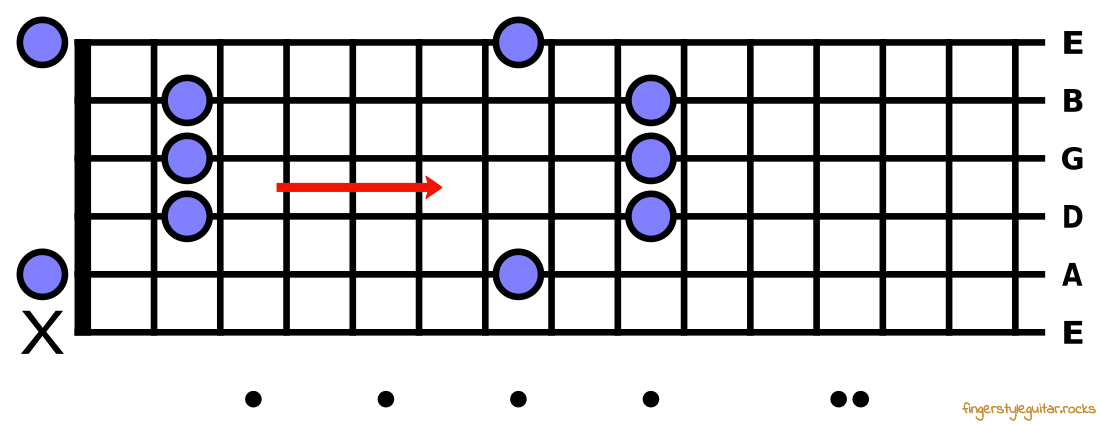The CAGED system
CAGED is a system of movable chord shapes that helps you play chords anywhere on the guitar fretboard. The CAGED system is based on the familiar open chords C, A, G, E and D, hence the name CAGED.
Table of contents
Making open chords movable
Let's start with a question: What would the E major chord look like if we played it an octave higher?

The result is still an E major chord, but it's no longer an open chord, because all strings are fretted. The advantage of chord shapes where all strings are fretted is that these chord shapes can be moved without changing the relationship of the notes to each other.
If we now move the chord shape from the 12th fret to the 5th fret, we get an A major chord instead of an E major chord.

It's important to distinguish between chords and chord shapes. The new chord at the 5th fret is an A major chord, but it's played using the E major chord shape.
The idea of making open chords movable can be applied to any open chord. For example, also to C, A, G, and D:




Some of these movable chord shapes are difficult or even impossible to play, so sometimes it's enough to use parts of these shapes, but more on this later.
From movable chords to CAGED
Now that we have turned the five open chords C, A, G, E and D into movable chord shapes, let's have a look at the CAGED system. The CAGED system combines the five movable chord shapes described above into a pattern that spans the entire fretboard:

The numbers in the circles are the intervals / scale degrees. Please have a look at the introduction to intervals and chords if you haven't done so already.
What you see above are five different ways to play the same chord. If you want to play a different chord, you need to move the CAGED pattern accordingly (the 1 in the pattern needs to match the root note of the chord you want to play).
One way to think about the CAGED system is to always have the entire CAGED pattern in mind and move the entire pattern. Another way to think about it is to use the individual chord shapes and move them accordingly. For example, if you want to play a D major chord using the C major chord shape, all you need to do is move the chord shape so that the root note matches the desired root note.

You could also use the G major chord shape to play the D major chord.


